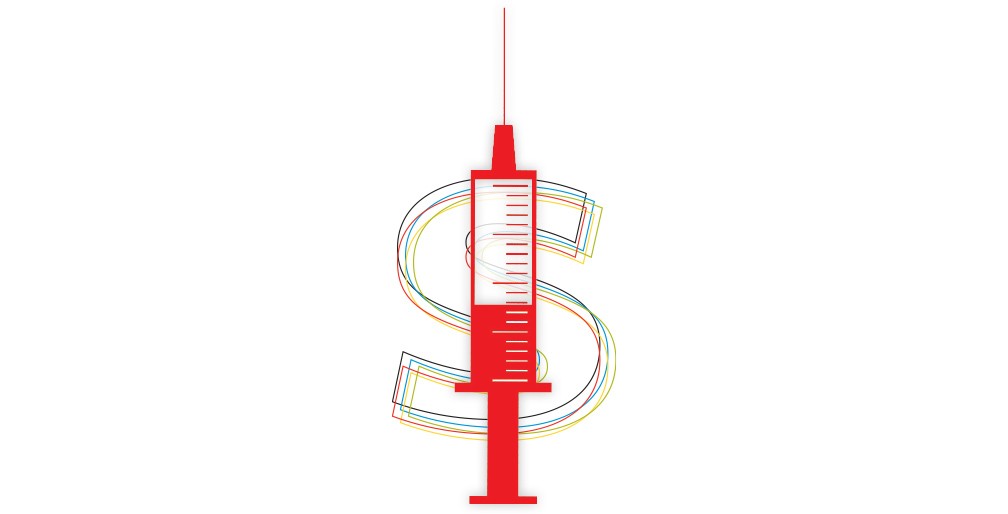Conversation Matters
Archaeology uncovers artifacts and examines them to shed light on the past and solve its mysteries. Yet artifacts alone do not tell the complete story; archaeologists are extremely careful about mapping their sites and discoveries because where an artifact is found in relation to other artifacts can be the difference between an ordinary pottery shard and a profound leap in historical knowledge. The environment helps archaeologists understand an object’s relationship to the past. This understanding informs their and others’ work, creating the opportunity for greater insight and impact.
What does this have to do with your business? One dictionary defines environment as the surroundings/conditions in which a person, animal or plant lives or operates. In addition to the physical components of your enterprise, the myriad conversations of the people who work in and around the enterprise also are components of that environment. This conversational network in which people operate—made up of prevailing and agreed-upon conversations—matters.
All work in an enterprise involves a form of conversation. Even if one is speaking and listening to oneself, designing a machine that has plans and an instruction manual (forms of talking), or chatting at the proverbial water cooler, conversations take place all the time, all across an organization. The amalgamation of millions of conversations in any large enterprise in any given week creates an invisible force field that constitutes the environment in a much more potent way than the furniture and the color of the walls do.
Talking [and hearing] is woven into the very fabric of the organization. It drives how people think and act, now and in the future.
Just as the air that she breathes is a part of the environment for a long-distance runner, the network of conversations the people of your company engage in are a part of their work environment. Share on X And just as the quality of the air will impact the runner’s performance, the quality of those conversations will have a powerful impact on your company’s performance. The challenge is that this network of conversations is almost never what executive management thinks it is. Leadership in all but the best-run companies tends to operate in a bubble of self-talk—a mirrored box of conversations that reflect back their own reality, not the reality of the people who do the work, nor the reality of their customers or suppliers.
Default or Designed: Which Work Setting Will It Be?
The enterprise’s work environment—the one that impacts organizational performance—
can be vividly brought to the forefront. It can then be measured and assessed by listening carefully to the conversations that people in the organization have about themselves, their products and customers, the competition, suppliers, senior management, the industry—anything to do with the business.
But all this talk is just what people say: not necessarily reality or the truth. If you were to intentionally study your organization’s work environment today by really listening to the conversations around you—especially the “meeting after the meeting” and the hallway conversations—you might feel a lot like an archaeologist making a stunning discovery that upends business as you know it. It might change your reality. And that is a good thing!
Although some companies hire professionals to design workspaces that will support collaboration and performance, many are not proactive or intentional about physical developments. Things just happen over time. The network of conversations at many organizations is much the same: Conversations are not created or designed, and no one takes responsibility for them. The environment just evolves, based on people, programs, results, successes, failures, gossip, rumors and interpretations. It is also infused with people’s beliefs about their personal experiences at and outside of work, as well as their experiences with their colleagues and managers. The work environment defaults to the past and the primary meaning and sense attached to it.
Without intentional action, the default work environment carries the business from decision to decision, assumption to assumption, as though drifting along in a current. The work environment speaks to the enterprise’s people, shaping their perceptions, thoughts, behavior and actions. It tells people what is and is not possible. Instead of the marketplace and customers, in particular, shaping perceptions and actions, the default work environment defines the boundaries and sets the rules for how to be successful and avoid failure inside the organization.
This can lead to focusing on the wrong things (“Just make your numbers,” or “Please the boss.”), false assumptions (“The customer is always right.”) and resignation (“Why bother asking? Senior management will never let us do that,” or “Don’t rock the boat.”). The work environment of talk, left unexamined, can prevent breakthrough thinking and inhibit growth.
What if, instead, you could design a new work environment, one that supports realizing your enterprise’s ambitions and strategy? What if you could chart an entirely new course? Instead of trying to fix something that feels broken, what if you designed and installed a transformed version of your enterprise? What if you abandoned one trail and blazed a new one in a completely different direction that left the competition in the dust and had customers beating a path to your door?
If you were to intentionally study the formal and informal conversations of your business today, you might feel a lot like an archaeologist making a stunning discovery that upends business as you know it. And that’s a good thing.
Three Steps to a Proprietary Future
Transformational leaders have a feel for their business’ work environments and are committed to moving toward an environment that is intentional and works toward a particular future—one that the enterprise creates and owns. That shift is possible because much of the work environment is not chairs and walls: It is language—and language can be highly malleable. If you can change the network of conversations that constitute the organization—by retiring those that are inconsistent with the desired future, by amplifying and reinforcing those that are supportive, and by introducing new ones—you can change the work environment as surely as if you were to bulldoze a wall or scrap old chairs.
Regardless of the past—good, bad or ugly—there is a proprietary future for your enterprise that, while challenging, is inspiring and exciting. To move in that direction, start with these three steps:
1) Reveal your organization’s default work environment of talk.
This is the first step in producing breakthrough results. What are the conversations, beliefs, unwritten rules and assumptions that make up this environment? The factors to consider are both internal and external to the enterprise.
The work environment of talk can support or compromise business performance. For example, a pharmaceutical giant had received warning letters from the Food and Drug Administration (FDA) for manufacturing compliance violations. Rather than looking internally at the behaviors and actions that led to this outcome, the default conversation was, “The FDA is the enemy and is out to get us.” Compliance citations were perceived as undeserved policing. And if there was internal fault, it was always some other department that was to blame. This shaped how people thought about the violations, their behavior toward the FDA during site visits and how they approached the necessary corrections.
As you can imagine, the results were not great, and the company’s relationship with the FDA deteriorated.
2) Unhook from the old conversations.
Once you understand the environment of the organization, everyone from the C-suite to the factory floor must then be willing to look at it as a way of working rather than the way it works. Leaders must take responsibility for how they reinforce or participate in conversations and look for ways to rewrite or redesign those conversations, commitments and concerns that stand in the way of breakthrough results.
This process allows you to deconstruct the current conversations that the people of the enterprise fall into. People need to learn to separate the facts (“We have received multiple warning letters from the FDA.”) from their narrative about the facts (“The FDA is out to get us.”). They need to learn to see organizational myths as myths disguised as truths and challenge the most deeply held assumptions. Only then can leadership invent a new proprietary future and new conversations that are consistent with the desired future and other organizational commitments.
The key is communicating these changes to all stakeholders so everyone can buy in to the new expectations and deliverables. The Harvard Business Review article “To Lead Change, Explain the Context” noted, “Leaders have to place strategic changes, initiatives, and goals into a broader organizational context, or they risk losing good talent, burning out managers, and wasting money on programs that don’t pay off. People have to see why what they’re doing has to change, why they should suddenly be moving in a new direction.”
3) Commit to a new future.
When you design a future and create new conversations, instead of just repeating words that have taken on a life of their own, you must break free from reinforced patterns of behavior and actions that stand in the way of real growth. A transformational leader stands out in the future—not just the future as a nebulous concept but a designed future that is proprietary to their organization and that has a clear path forward with real possibilities for breakthrough results. Imagine if, instead of trying to force old ways of thinking to fit new paradigms, your organization actually entered a realm of conversations that can generate new ways of perceiving, new actions, new thoughts and new behaviors.
That pharmaceutical company broke free from the default conversation (“The FDA is our enemy.”) and adopted the mindset that the FDA was their partner in being a model of excellence in the pharmaceutical manufacturing world. They worked with leaders and 1,500 people from the front lines to clean out the past narrative and engage in the new future. This allowed people to generate a whole new way of relating to compliance requirements and their FDA counterparts. It shifted what they organized around, what their priorities were and how they focused their actions.
To be sure, when they made this radical declaration, they were still under the FDA consent decree—a far cry from a model of excellence. However, a declaration, or stand, is not a description of the current reality; instead, it is a commitment to an inspiring future that shapes people’s perceptions, behaviors and actions in the present. The company also returned to certification faster than they had planned, without burning out their people, and they have sustained their breakthrough performance. When this particular situation was resolved, one of the supervisors said, “We did it, and we did it like a model of excellence! Now let’s get even better!”
Consider the innovation that we have seen during the past year as the pandemic raged worldwide. Some companies achieved record-breaking results because they changed the work environment, rapidly shifting from old ways of doing business to a completely new model—nearly overnight—with great success.
Why wait for a crisis to force what you could be doing now to move your business into the future?
Portions of this article are based on materials created by Werner Erhard and on the book The Three Laws of Performance: Rewriting the Future of Your Organization and Your Life, by Steve Zaffron and Dave Logan, 2009, Jossey-Bass, San Francisco.
This article appeared in the Summer 2021 issue Insigniam Quarterly.



